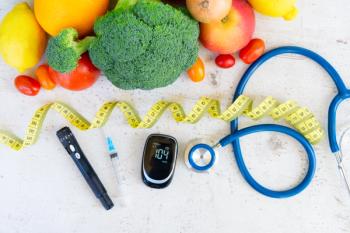
Pharmacists Play a Vital Role in Generic Drug Product Selection
Generic substitution can lower patient drug costs and improve medication adherence.
Approximately 9 out of 10 prescriptions in the United States are for generic drugs. The FDA Drug Competition Action Plan encourages market competition for these products and helps to remove barriers to generic drug development so that patients can access these affordable medications.1
Typically, generic drugs cost approximately 85% less than brand-name products.2 Approved Drug Products With Therapeutic Equivalence Evaluations, commonly known as the Orange Book, serves as the gold standard reference for generic drug substitution and is available as a free resource electronically and through a mobile app (Orange Book Express).3,4
This information is generally integrated into community pharmacy computers to facilitate generic drug substitution. Pharmacists play an integral role as drug experts in generic drug product selection and patient education. Pharmacy Times interviewed pharmacists from the Pharmacist Moms Groups about their recommendations and patient counseling advice.
Generic Drug Substitution and Product Selection
The Drug Price Competition and Patent Term Restoration Act of 1984, also known as the Hatch-Waxman Amendments, established the abbreviated new drug application (ANDA) for generic drug products.1 In fact, the FDA approves more than 800 generic drug applications each year.2
As of September 23, 2021, there are 68 “first generics” approved, which means that they are the first-to-file an ANDA and receive a 180-day generic drug marketing exclusivity.5 Patients should be educated that after this 6-month period, the cost of the generic drug will decrease further because there is more competition from other manufacturers.
Ultimately, switching patients to generic drug products can promote medication adherence and lead to improved health outcomes.6
“We unfortunately lose a lot of patients who abandon their prescriptions at the point of sale because of high costs. Generic substitution, when available, helps to mitigate this and keep patients on therapy, ideally without delay or interruption,” said Nicole Lovullo, PharmD, RPh.
Renae M. Kraft, PharmD, has observed patients rationing their medications that they cannot afford, and she helps to ensure they receive a generic drug or another similar medication prescribed by their physician.
Besides the Orange Book, Drugs@FDA includes a catalog of generic drug approvals. Pharmacists can search this database to determine whether a generic drug product is available through the following instructions:1
- First search by brand name.
- Next, select the brand name product and identify the products listed under “Therapeutic Equivalents for…”
- Products that include an ANDA (not NDA) number next to the name are generic products.
Unfortunately, various types of generic drugs have remained underutilized, such as those for cardiovascular disease management, combination products, and oral contraceptives.6 One recent cross-sectional study of all 50 states and Washington, DC, evaluated generic drug product selection laws as of 2019 and found variations by state.6
The study found that 19 states mandated generic substitution by pharmacists when generic products were available (stating pharmacists “shall” substitute); however, 31 states and Washington, DC, permitted but did not require substitution.6
These laws stated that pharmacists “may” substitute, and 4 required pharmacies to post information for patients of the possibility of substitution.6 This study demonstrates the need for updating state laws to encourage generic drug substitution by pharmacists.
Pharmacist’s Role in Education
As drug information experts and one of the most accessible health care professionals, pharmacists are in a unique position to educate patients and other health care professionals about the benefits of switching to generic OTC and prescription products at the point-of-care in community pharmacy settings.
“Inpatient formularies are another way pharmacists can encourage generics and provide cost reduction for patients,” said Amy Mgonja, PharmD, BCGP, from a hospital perspective.
It is critical for pharmacists to educate patients that generic drugs are just as safe and effective as the brand products, and they can result in significant cost savings.1 Generic products marketed by different companies may vary in size, shape, and color, so patients should be counseled about this when dispensed a drug from a different manufacturer.1
The FDA ensures that generic medications perform in the body the same as brand-name drugs and are required to have the same active ingredients, dosage, route of administration, safety, efficacy, strength, quality, and labeling.1
Kimberly Swearingen, RPh, and Jennifer Cunard Thompson, PharmD, MS, counsel patients about authorized generics that are often manufactured by the brand name company because they are the same medication at a lower cost.
Joanne Hanna, RPh, reassures patients through medication therapy management consults that she herself takes generic drugs and they are safe and effective. Patients may have questions about the generic drug approval process, so it is important for pharmacists to convey this information.
Manufacturers must submit an ANDA to the FDA for approval to market a generic drug that is the same (bioequivalent) to the brand product.1 The FDA reviews the application to ensure that the manufacturer has demonstrated the generic drug can be substituted for the brand medication.1
Pharmacists can initiate these important conversations with patients and address any concerns they may have. Social media (eg, Facebook, Twitter) is an effective way for pharmacists to educate the public about generic drugs and provide patients with reputable health information.7
About the Author
Jennifer Gershman, PharmD, CPh, PACS, is a drug information pharmacist and Pharmacy Times contributor who resides in South Florida.
References:
- Generic drugs.FDA.
https://www.fda.gov/drugs/buying-using-medicine-safely/generic-drugs .Accessed September 28, 2021. - Prescriber stakeholder toolkit-sample blog post/newsletter article.FDA.
https://www.fda.gov/drugs/generic-drugs/prescriber-stakeholder-toolkit-sample-blog-postnewsletter-article .Accessed September 28, 2021. - Orange book preface.FDA.
https://www.fda.gov/drugs/development-approval-process-drugs/orange-book-preface .Accessed September 28, 2021. - Orange Book Express.Apple.
https://apps.apple.com/us/app/ob-express-2-0/id1229831803?ls=1 .Accessed September 28, 2021. - First generic drug approvals.FDA.
https://www.fda.gov/drugs/drug-and-biologic-approval-and-ind-activity-reports/first-generic-drug-approvals .Accessed September 28, 2021. - Sacks CA, Wiele VL, Fulchino LA, et al.Assessment of variation in state regulation of generic drug and interchangeable biologic substitutions.JAMA Intern Med.2021; 181(1):16-22.doi: 10.1001/jamainternmed.2020.3588.
- Generic drugs stakeholder toolkit.FDA.
https://www.fda.gov/drugs/generic-drugs/generic-drugs-stakeholder-toolkit .Accessed September 28, 2021.
Newsletter
Stay informed on drug updates, treatment guidelines, and pharmacy practice trends—subscribe to Pharmacy Times for weekly clinical insights.


















































































































































































































